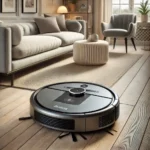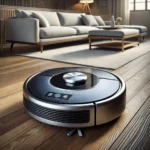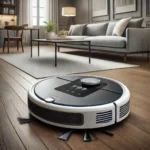Have you ever wondered when to replace your Roborak parts? This guide covers everything you need to know about Roborak failure, part replacement cycles, and more.
When it comes to robotic vacuums like Roborak, understanding how and when to replace parts can significantly enhance the lifespan and performance of your device. Whether you’re experiencing Roborak failure, contemplating part replacements, or simply want to know about maintenance cycles, this article will break down all the essential information you need.
Roborak Parts: What Are They?
Roborak, like other robot vacuums, is a marvel of technology designed to make household cleaning easier. The parts of a Roborak system are specifically engineered to help it perform efficiently, ensuring smooth navigation and thorough cleaning. These parts include:
-
Brushes and Rollers These are crucial for agitating and picking up dirt and debris from floors.
-
Wheels Essential for movement and navigation, ensuring the vacuum reaches every corner.
-
Sensors Roborak uses various sensors to detect obstacles, create maps of your space, and avoid collisions.
-
Batteries Vital for powering the system, and their lifespan can affect the vacuum’s overall performance.
-
Dustbin Collects dirt and debris as the vacuum cleans.
-
Filter Ensures the vacuum traps fine dust particles and allergens.
-
Mainboard The brain of the vacuum, coordinating all other components and functions.
Maintaining these parts is essential for keeping your Roborak in good working order. Over time, these parts can wear out, and understanding how to handle part replacement is key to maximizing performance.
Roborak Failure: How It Happens and What To Do
Sometimes, Roborak may experience failure, usually due to wear and tear on its parts. Common causes of failure include:
-
Worn Brushes Brushes can wear out after extensive use, which leads to reduced cleaning efficiency.
-
Damaged Sensors If the sensors are not functioning properly, the vacuum may bump into obstacles, miss spots, or fail to map your home.
-
Battery Life A dying battery can lead to shorter cleaning times or the vacuum failing to recharge itself properly.
-
Obstructions in the Wheels If debris gets stuck in the wheels, the vacuum may struggle to move or navigate effectively.
If you notice any of these issues, it’s essential to troubleshoot and replace the faulty parts. Replacing parts as soon as you notice degradation can help prevent more significant issues and restore the vacuum’s performance.
When Should You Replace Roborak Parts?
The frequency of part replacement depends on usage and part wear. Here are some typical replacement intervals:
-
Brushes and Rollers Replace every 6 to 12 months, depending on use.
-
Battery A battery typically lasts 1 to 2 years. If you notice the vacuum not holding charge, it’s time for a replacement.
-
Filters Clean or replace filters every 2 to 3 months.
-
Wheels If they become worn out or clogged, replace them when the vacuum has trouble moving.
-
Sensors Typically, these last a long time, but if you experience problems with navigation or collision detection, it could be time to replace them.
How To Replace Roborak Parts
Replacing parts may seem like a daunting task, but with the right approach, it can be straightforward. Roborak usually offers step-by-step guides or videos that show how to replace specific parts. However, you can also find replacement parts from authorized sellers or online retailers.
For example, many users choose to replace the brushes or wheels themselves, often requiring just a screwdriver to open the vacuum and swap out the components. If you’re unsure, consider contacting customer service for assistance or opting for professional repair.
👉 Learn more about Roborak part replacements 👈
Roborak Part Replacement Cycle
Understanding the part replacement cycle is essential for keeping your Roborak in top condition. If you replace parts at the right intervals, you’ll get the best performance from your vacuum. The following is a general guideline:
-
Brushes and Rollers These wear out faster due to constant contact with surfaces. Replacing them every 6 months will ensure that your vacuum continues to clean effectively.
-
Filters These should be cleaned regularly, ideally every 1-2 weeks, and replaced every 3 months, depending on usage.
-
Battery Keep an eye on battery performance. If your Roborak doesn’t hold a charge like it used to, replacing the battery every 1-2 years is recommended.
-
Sensors and Wheels These parts last a long time, but if your vacuum starts having trouble with navigation or movement, inspect these parts for wear and replace them as needed.
By keeping track of these cycles, you can ensure that your Roborak remains in great condition and continues to perform efficiently. Regular maintenance not only improves performance but can also extend the lifespan of your vacuum.
👉 Explore Robo Rak maintenance tips 👈
Conclusion
In conclusion, understanding Roborak parts, their replacement cycles, and how to troubleshoot failures is crucial for maintaining your robot vacuum’s optimal performance. Whether it’s replacing worn-out brushes or ensuring your sensors are functioning properly, keeping a regular maintenance schedule is key. If you’re ever unsure, don’t hesitate to contact support or consult online guides for part replacement.
By following these tips and being proactive about repairs, you can ensure your Roborak stays as efficient as ever, making cleaning your home a breeze.






